Intro to Women and Gender Studies - WGST110 - Pop Culture Representations
Research Sources
This video describes how to find sources in the library databases and on the internet. It adds additional details to the information on this page.
Library catalog
View books and eBooks on gender or race in popular culture below, or follow the catalog link to perform your own search.
Books can be useful for inspiring a topic, getting an introduction to your topic, or finding more advanced, detailed information. Because they are much longer than articles, they provide a broader scope. Click here to learn how to access print library books during the pandemic.
-
RVCC CatalogA catalog of the books and media on campus, plus eBooks and streaming video.
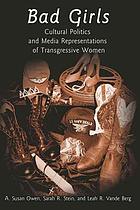
Bad girls: cultural politics and media representations of transgressive women
Bad Girls examines representational practices of film and television stories beginning with post-Vietnam cinema and ending with postfeminisms and contemporary public disputes over women in the military. The book explores a diverse range of popular media texts, from the Alien saga to Ally McBeal and Sex and the City, from The Net and VR5 to Sportsnight and G.I. Jane.

Beyond bombshells: the new action heroine in popular culture
Beyond Bombshells analyzes the cultural importance of strong women in a variety of current media forms. Action heroines are now more popular in movies, comic books, television, and literature than they have ever been. Their spectacular presence represents shifting ideas about female agency, power, and sexuality.
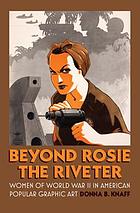
Beyond Rosie the Riveter: Women of World War II in American popular graphic art
As the author reveals, visual messages received by women through war posters, magazine cartoons, comic strips, and ads may have acknowledged their importance to the war effort but also cautioned them against taking too many liberties or losing their femininity. This study examines the subtle and not so subtle cultural battles that played out in these popular images, opening a new window on American women's experience.

Black women and popular culture: the conversation continues
Black Women and Popular Culture: The Conversation Continues provides cutting-edge research in its analysis of the representation of Black women in popular culture and the potential implications of those images and messages. This compilation inspires critical thought and adds to the discussion on the various roles of Black women in popular culture (eBook).
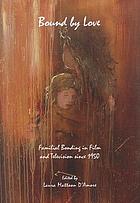
Bound by Love: Familial Bonding in Film and Television since 1950
By tracing the historical lessons that have been taught in film and television about love, marriage, and parenthood, Bound by Love compellingly demonstrates a popular cultural dialogue about the changing nature of the American family over the past sixty years (eBook).
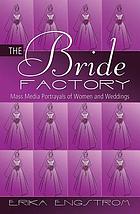
The bride factory: mass media portrayals of women and weddings
In response to the growing scope and popularity of wedding-related offerings and the media attention given to celebrity and royal weddings, The Bride Factory critically examines various bridal media outlets, artifacts, and the messages they convey about women today. The book departs from conventional wisdom and other treatments of the bridal industry as a scholarly topic by revealing how media portray women in modern American society, and how these portrayals reflect feminism and femininity and illustrate the Hegemony created by these media.
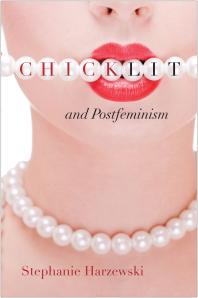
Chick lit and postfeminism
"Chick lit" mutated from a movement in American women's avant-garde fiction in the 1990s to become a humorous subset of women's literature, journalism, and advice manuals. Chick Lit and Postfeminism successfully demonstrates how chick lit and the critical study of it yield social observations on upheavals in Anglo-American marriage and education patterns, heterosexual rituals, feminism, and postmodern values (eBook).
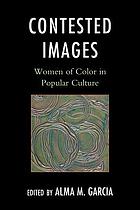
Contested images: women of color in popular culture
Contested Images offers a collection of 17 essays that analyze the representations in popular culture of African American, Asian American, Latina, and Native American women. No other anthology offers this wide spectrum of ethnicities (eBook).
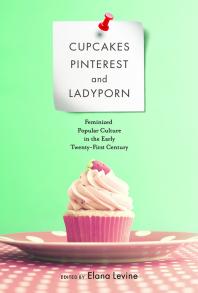
Cupcakes, Pinterest and ladyporn: feminized popular culture in the early twenty-first century
Elana Levine brings together writings from feminist critics that chart the current terrain of feminized pop cultural production. Analyzing everything from Fifty Shades of Grey to Pinterest to pregnancy apps, contributors examine the economic, technological, representational, and experiential dimensions of products and phenomena that speak to, and about, the feminine (eBook).

Dangerous curves: Latina bodies in the media
Latina bodies have assumed an almost ubiquitous presence in US culture. 'Dangerous Curves' traces the visibility of the Latina body in media & popular culture, including the news, media gossip, movies, television news, & online audience discussions.
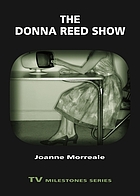
The Donna Reed show
Analyzes The Donna Reed Show, which aired from 1958 to 1966, as a key moment of cultural transition. This show was the first TV family sitcom to feature the mother as the center of the show. Reed's character, Donna Stone, is a loving mother and wife, but also a strong woman, an active participant in her community, a woman with feelings and a sense of humor (eBook).

Evita, inevitably : performing Argentina's female icons before and after Eva Perón
Evita, Inevitably sheds new light on the history and culture of Argentina by examining the performances and reception of the country's most iconic female figures, in particular, Eva Perón, who rose from poverty to become a powerful international figure. The book links the Evita legend to a broader pattern of female iconicity from the mid-nineteenth century onward, reading Evita against the performances of other female icons (eBook).

Feminism & popular culture: investigating the postfeminist mystique
In this book the authors consider why the twenty-first century media landscape is so haunted by the ghosts of these traditional figures that feminism otherwise laid to rest. Why, over fifty years since Betty Friedan's critique, does the feminine mystique exert such a strong spectral presence, and how has it been reimagined to speak to the concerns of a postfeminist audience? To answer these questions, the authors draw from a rich array of examples from contemporary film, fiction, music, and television.

Geek chic: smart women in popular culture
The essays in this book demonstrate how the popular media repeatedly affirms stereotypes of femininity while paradoxically challenging the stigmatization of smart women. Contributors salute a wide range of popular characters and real female role models, from Daria to Hillary Rodham Clinton, weaving in references to television shows like Gilmore Girls and analyses of classic icons like Sabrina.
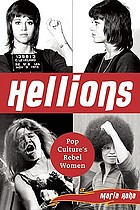
Hellions: pop culture's women rebels
Hellions urges its readers to expand the definition of rebellion to include all kinds of rebel women - from pop stars to political mavericks to renegade thinkers. It's past time to give women rebels their due, and celebrate female rebelliousness the way we do its male equivalent (eBook).
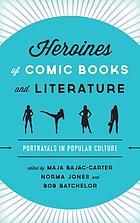
Heroines of comic books and literature: portrayals in popular culture
Focused on printed media, this collection looks at heroic women depicted in literature, graphic novels, manga, and comic books. Addressing heroines from such sources as the Marvel and DC comic universes, manga, and the Twilight novels, contributors go beyond the account of women as mothers, wives, warriors, goddesses, and damsels in distress.
Heroines of Film and Television
As portrayals of heroic women gain ground in film, television, and other media, their depictions are breaking free of females as versions of male heroes or simple stereotypes of acutely weak or overly strong women. Although heroines continue to represent the traditional roles of mothers, goddesses, warriors, whores, witches, and priestesses, these women are no longer just damsels in distress or violent warriors. In Heroines of Film and Television: Portrayals in Popular Culture, award-winning authors from a variety of disciplines examine the changing roles of heroic women across time (eBook).
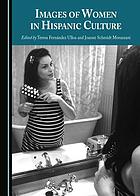
Images of women in Hispanic culture
This book studies the ways traditional polarized images of women have been used and challenged in the Hispanic world, especially during the 20th century and the beginning of the 21st century by writers and the media, but also in earlier time periods (eBook).

Killing women: the visual culture of gender and violence
The examination of women and violence has traditionally focused on women who are killed or who are the victims of violence. Women murderers were often portrayed as vengeful wronged women or as maternal protectors. Recently, however, there have been significant shifts in the characterization of women who kill, in both popular culture (Lara Croft, Buffy, and Kill Bill) and in the current global political landscape (eBook).

Lockstep and dance: images of black men in popular culture
This thought-provoking text examines popular culture's reliance on long-standing stereotypes of black men as animalistic, hypersexual, dangerous criminals, whose actions, attitudes, dress, and language both repel and attract white audiences (eBook).

Media disparity: a gender battleground
For decades, scholars have repeatedly found the inequity of gender representations in informational and entertainment media. Beginning with the seminal work by Gaye Tuchman and colleagues, we have repeatedly seen a systemic underrepresentation and misrepresentation of women in media. Examining the latest research in discourse and content analyses trending in both domestic and international circles, Media Disparity: A Gender Battleground highlights the progress--or lack thereof--in media regarding portrayals of women, across genres and cultures within the twenty-first century (eBook).
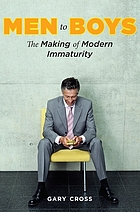
Men to boys: the making of modern immaturity
Adam Sandler movies, HBO's Entourage, and such magazines as Maxim and FHM all trade in and appeal to one character -- the modern boy-man. Gary Cross, renowned cultural historian, identifies the boy-man and his habits, examining the attitudes and practices of three generations to make sense of this gradual but profound shift in American masculinity (eBook).
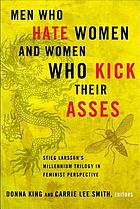
Men who hate women and women who kick their asses: Stieg Larsson's Millennium trilogy in feminist perspective
Stieg Larsson was an unabashed feminist in his personal and professional life and in the fictional world he created, but his books are full of graphic depictions of violence against women. How do readers and moviegoers react to these depictions, and what do they make of the women who fight back, the complex masculinities in the trilogy, and the ambiguous gender of the elusive Lisbeth Salander?
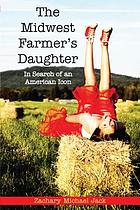
The Midwest farmer's daughter : in search of an American icon
From yesterday's gingham girls to today's Farmer Janes, The Midwest Farmer's Daughter unearths the untold history and renewed cultural currency of an American icon. Packed with many memorable interviews, print artifacts, and historic images, this groundbreaking documentary history describes the centuries-long reiteration and reinterpretation of agrarian daughters in the field, over the airwaves, on the printed page, and in the court of public opinion (eBook).
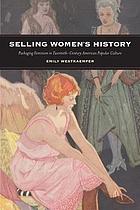
Selling women's history: packaging feminism in twentieth-century American popular culture
Selling Women's History reveals how, from the 1900s to the 1970s, popular culture helped teach Americans about the accomplishments of their foremothers, promoting an awareness of women's wide-ranging capabilities. On one hand, Emily Westkaemper examines how this was a marketing ploy, as Madison Avenue co-opted women's history to sell everything from Betsy Ross Red lipstick to Virginia Slims cigarettes. But she also shows how pioneering adwomen and female historians used consumer culture to publicize histories that were ignored elsewhere.
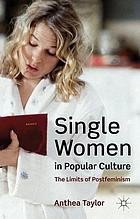
Single women in popular culture: the limits of postfeminism
Single Women in Popular Culture demonstrates how single women continue to be figures of profound cultural anxiety. Examining a wide range of popular media forms, this is a timely, insightful and politically engaged book, exploring the ways in which postfeminism limits the representation of single women in popular culture.
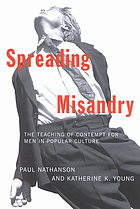
Spreading misandry: the teaching of contempt for men in popular culture
Spreading Misandry breaks new ground by discussing misandry in moral terms rather than purely psychological or sociological ones and by criticizing not only ideological feminism but other ideologies on both the left and the right (eBook).

Wolf-Women and Phantom Ladies: female desire in 1940s US culture
Provides encyclopedic coverage of female sexuality in 1940s popular culture. Popular culture in the 1940s is organized as patriarchal theater. Men gaze upon, evaluate, and coerce women, who are obliged in their turn to put themselves on sexual display. In such a thoroughly patriarchal society, what happens to female sexual desire? Wolf-Women and Phantom Ladies unearths this female desire by conducting a panoramic survey of 1940s culture that analyzes popular novels, daytime radio serials, magazines and magazine fiction, marital textbooks, Hollywood and educational films, jungle comics, and popular music.

The woman fantastic in contemporary American media culture
The Woman Fantastic may appear in speculative or realist settings, but her presence is always recognizable. Her gendered textual and cultural construction seems entirely fantastic. Neither second- or third-wave role model nor "positive" image to counteract something perceived as "negative," she instead embodies an artificial construction of womanhood that "does" gender in ways that reflect back to us what we mean when we talk about gender.
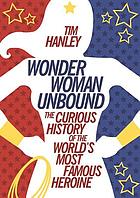
Wonder woman unbound: the curious history of the world's most famous heroine
With her golden lasso and her bullet-deflecting bracelets, Wonder Woman is a beloved icon of female strength in a world of male superheroes. But this close look at her history portrays a complicated heroine who is more than just a female Superman. The original Wonder Woman was ahead of her time, advocating female superiority and the benefits of matriarchy in the 1940s. At the same time, her creator filled the comics with titillating bondage imagery, and Wonder Woman was tied up as often as she saved the world (eBook).
Research databases
Use these library databases to find research articles.
Because this is a multi-disciplinary topic, it may be difficult to select a single database to meet all your information needs. RVOneSearch will search most of the library's databases at once, so you may find that is the best option for your research.
-
RVOneSearch This link opens in a new windowRVOneSearch provides access to most of the information contained in many of the library's databases plus the RVCC library catalog.It is a great place to begin your research with select key words to obtain a list of articles available throughout multiple databases as well as books, ebooks and websites accessible through RVCC’s library. Many limiters are available to modify your search such as full-text only, peer reviewed (scholarly), specific date ranges, or a specific database or source type.
-
Communications & Mass Media Collection (Gale) This link opens in a new windowA Gale database that contains full-text articles from over 350 journals and streaming videos on all aspects of the communications field including topics on advertising, broadcast journalism, communication engineering, editing, graphics, information technology, linguistics, marketing, public relations, publishing, sports commentary and photography.
-
Diversity Studies Collection This link opens in a new windowA Gale database that provides access to scholarly journals and magazines that explore cultural differences, contributions, and influences in the global community. This is a good resource for the social sciences, history and liberal arts coursework.
-
GenderWatch This link opens in a new windowA ProQuest database that includes important historical perspectives on the evolution of the women's movement, men's studies, the transgendered community and the changes in gender roles over the years.It indexes over 300 titles, with more than 250 in full-text, from an array of academic, radical, community and independent presses dating back to 1970 that include scholarly journals, magazines, newspapers, newsletters, regional publications, books and NGO, government and special reports. A good source for topics like gender, family, ethnic, and societal studies as well as sexuality, religion, societal roles, feminism, masculinity, eating disorders, healthcare, and the workplace.
-
JSTOR This link opens in a new windowA multidisciplinary, scholarly database containing digitized back issues of academic journals, books, primary sources, and current issues of journals.It provides full-text searches of almost 2,000 journals on a variety of subjects including history, science, literature, music, philosophy, world culture and business.
-
SocIndex This link opens in a new windowThis EBSCO database provides comprehensive coverage of sociology, encompassing all sub-disciplines and closely related areas of study.It features millions of records with subject headings from a sociological thesaurus. It provides mostly full-text access to scholarly journals, as well as indexing for books, monographs, conference papers and other non-periodical materials. It also provides over 25,000 author profiles on the most prolific, most cited and most frequently searched for authors in the database.
- Last Updated: Sep 4, 2025 2:48 PM
- URL: https://library.raritanval.edu/wgst
- Print Page
